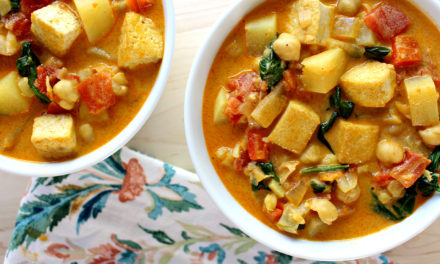While some nuts are packed with protein and antioxidants, they are also chock full of calories. And during the holiday season, bowls of whole nuts linger in offices and on living room coffee tables, which can lead to an 800-calorie nut fiasco before you even know what’s happening.
Ounce for ounce nuts contain about 200 calories—and there in lies the problem. Due to their high caloric content, it’s important to know what is an official serving size of nuts to prevent unwanted holiday weight gain. The secret to nut noshing is sticking to the appropriate 1 to 1.5 ounce portion of nuts a day.
The Pistachio Effect
One ounce of nuts differs depending on the nut variety. Take for example 1 ounce of Brazil nuts that is equal to six nuts, whereas 1 ounce of pistachios is equivalent to 49 nuts. That means we may literally have to count out those pistachios to prevent portion distortion unless of course we know about the Pistachio Effect.
James Painter, Ph.D., R.D. encourages buying pistachios in their shell. He discovered the mere act of peeling the shells off of pistachios saves us 86 calories as the de-shelling of the nut has us working more and eating less of them. Secondly, seeing the number of shell casings cast aside helps us to visualize how many nuts we really eat. The Pistachio Effect is all about becoming more mindful of eating behavior and knowing when to stop.
Nuts are an incredibly good source of nutrition. Eating nuts can be very satisfying, due to their fiber and protein content, which helps us to feel fuller longer and keeps our blood sugar from quickly dipping. Nuts also contain a slew of cancer-fighting phytochemicals and powerful antioxidants that benefit our brains, heart, and immune system.
The Nurses Health Study revealed that eating one ounce of fresh nuts a day could reduce the risk of heart disease by 30%. Specifically, it’s the unsaturated fats in almonds, pecans, peanuts, and walnuts have been shown to decrease bad cholesterol (LDL) by 2-19% in several studies. For more nutrition of the most common nuts from calories, fat, and protein to nutrition benefits, see the nutrition information below.
NUTTY NUTRITION
Almond
Serving: 23 nuts
Calories: 160
Fat: 14 g
Protein: 6 g
Health benefits: Almonds are high in Vitamin E and calcium and highest in protein and fiber compared to all the nuts. Almonds help control weight and blood sugar.
Brazil
Serving: 6 nuts
Calories: 190
Fat: 19 g
Protein: 4 g
Health benefits: Brazil nuts are high in the bone, prostate, and breast cancer-fighting mineral called selenium.
Cashew
Serving: 18 nuts
Calories: 160
Fat: 13 g
Protein: 4 g
Health benefits: Cashews are lowest in fat of all the nuts and high in iron and zinc, which help with immune health and vision. Cashews provide 25% of daily dietary magnesium -great for memory.
Macadamia
Serving: 11 nuts
Calories: 200
Fat: 22 g
Protein: 2 g
Health benefits: Macadamia nuts are high in heart healthy fats that help lower bad cholesterol-LDL, triglycerides, and total cholesterol.
Peanut
Serving: 28 nuts
Calories: 170
Fat: 14 g
Protein: 7 g
Health benefits: Technically not a nut but a legume, peanuts are high in folate excellent for child bearing women and brain health.
Pecan
Serving: 19 nuts
Calories: 200
Fat: 20 g
Protein: 3 g
Health benefits: Pecans are high in antioxidants and heart healthy fats helping to lower bad cholesterol-LDL.
Pistachio
Serving: 49 nuts
Calories: 160
Fat: 18 g
Protein: 4 g
Health benefits: Pistachios are high in calcium and help the immune system. They are lowest in calories and packed with calcium, B6, and Vitamin E.
Walnut
Serving: 14 halves
Calories: 190
Fat: 18 g
Protein: 4 g
Health benefits: Walnuts are high in heart healthy omega three fatty acids and antioxidants- decreasing inflammation and oxidative stress. Walnuts also contain manganese to help reduce PMS symptoms.
Ref: Moncel, B. (2014): About Food website
Shelling Out 5 Holiday Tips
1. Practice Portion Control: Measure out 1-ounce portions, which are approximately ¼ of a cup of nuts. Make snack bags of 1-ounce portions or buy nuts in portion-controlled packets. At parties, serve nuts in 1-ounce cups.
2. Garnish with nuts: Sprinkle nuts as garnishes on top of your favorite side dishes and desserts, yogurts and salads. Nuts are great additions to holiday appetizers, soups, and even topped on main dishes.
3. Read the food facts label for sodium: Mixed nuts and nuts in general which are prepackaged can contain high amounts of salt. Reading the Sodium section on the Food Facts label will help illuminate which brands have over 350 mg of sodium per serving. Be mindful that boiled peanuts are soaked in salt.
4. Beware of caramelized, sweetened nuts, and nut mixes: Sweetened nuts add on calories and more sugar. Watch for the words “caramelized, candied, or sugared.”
5. Avoid nuts packaged or roasted in oil: Roasted nuts may have been made with unhealthy fats. Instead, eat nuts raw or dry roasted.










